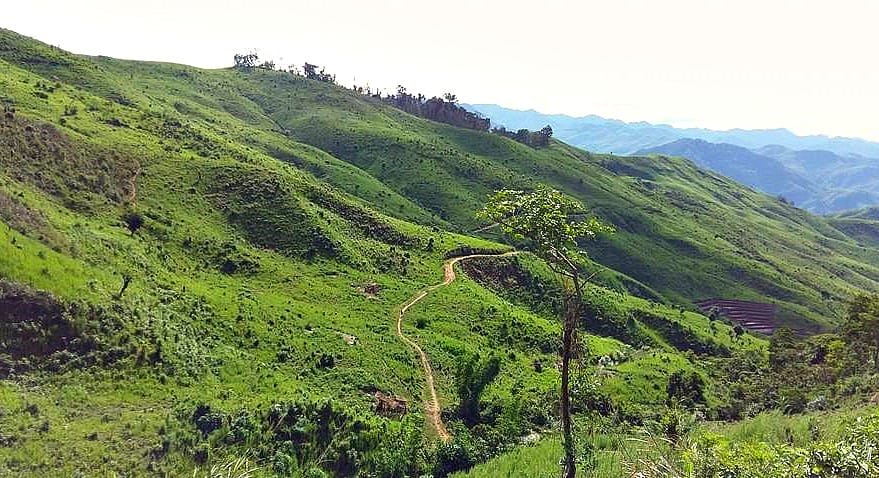You could be forgiven for thinking that you’d crossed into Vietnam on descending into Sam Neua, the provincial capital and the only sizeable Laos town east of the Annamite Mountains. Unlike the rest of Laos, which drains west into the Mekong, all of Hua Phan province’s rivers flow southeast to the Gulf of Tonkin – Sam Neua itself sits in the narrow Nam Xam River valley. If you want to feel like you’re in the middle of nowhere, Sam Neua fits the bill, sitting in a bowl surrounded by low, pleasant hills with the narrow river rushing through its centre.

Although there’s little to see in the town itself, it serves as a comfortable base for the Pathet Lao Caves in Vieng Xai, or a stopover on the push to northern Vietnam. Though there’s a number of guesthouses and an excellent tourist office, tourist infrastructure in Sam Neua is otherwise quite limited, and you’re likely to find that you’re regarded as something of a novelty, even in the centre of town. Be warned that Sam Neua can be a lot colder than the rest of the country, so a sweater and long trousers come in very handy if you’re planning on stopping here.
There’s little to occupy the traveller in Sam Neua, save absorbing the rugged frontier atmosphere of this most un-Lao outpost. The main street is the 2km-long, four-lane Phathy Road – a huge central boulevard lined with institutional-looking government buildings and bearing the unmistakable mark of the Vietnamese, who rebuilt the town after the war. It does seem remarkably empty, however, as though the city was destined for great things that never quite materialized.
There are almost no cultural sites, but you can walk up Phathy Road to the victory monument, an easy climb that affords a good view of the valley, and a bit further on, near the main street’s end, to Wat Phoxaysanalam. Construction of the wat began in 1958 and took nearly a decade to complete, whereupon it was almost immediately destroyed by the bombing. The modest structure that now stands here was completed in the 1980s. It was until very recently the only wat in town and there are only a handful of resident monks. As journalist Christopher Kremmer wrote in Stalking the Elephant Kings: “if you’re tired of seeing monks in Laos, come to Sam Neua.” The town’s three other prewar wats, including the 200-year-old Xieng Khuang-style Wat Inpeng, were never rebuilt. The sad little spires along Phathy Road leading up to the wat indicate where these holy sites once were.
Much more cheerful is the vibrant food market, on the eastern side of the river, which is a good place to get a feel for the province’s character. Vietnamese goods, many of which are bought by merchants at weekend border markets in Xieng Khoun and Na Maew, flood the stalls in a display of vegetables, meats and the occasional severed dog head. The market buzzes throughout the day, its vendors bundled against the cold with their heads wrapped in colourful scarves, a sartorial twist that most likely lent the province its name – “Hua Phan” means “wrapped head”. It’s a great place to head to for a cheap bowl of fõe, or to try some local snacks.
On the opposite side of the river is the dry market. Here you’ll find all manner of individual wooden stalls selling various goods, including a minor smattering of Lao textiles, although much of the best stuff gets sent directly to Luang Prabang or Vientiane. Although a lot of cloth is produced in Hua Phan, it’s all made in people’s homes, not factories. The alley behind the dry market houses all kinds of electrical shops bulging with refrigerators, televisions, rice-cookers, bicycles and home karaoke systems.






